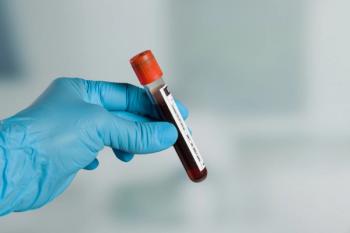
Analysis Estimates Impact of Interventions on Global HCV Epidemic
Scaling up prevention, treatment, and screening interventions can make substantial strides toward global hepatitis C elimination.
In 2017, the World Health Organization (WHO) targeted 2030 as the year to meet global elimination goals for hepatitis C virus (HCV). The global HCV epidemic faces several barriers and meeting WHO target goals will be difficult unless a vast strategy is implemented.
Although progress has been made in HCV treatment efforts, a new report published in The Lancet suggests that a multifaceted approach combining an extensive scaling up of screening, prevention, and treatment is needed to move toward global elimination. WHO elimination targets are defined as a 65% reduction in mortality and an 80% reduction in incidence by 2030 from 2015 baseline.
For the analysis, investigators estimated the worldwide impact of scaling up interventions that reduce the risk of transmission, improve access to treatment, and increase screening for HCV infection.
The status quo scenario, which represents the best estimate of what the HCV epidemic will look like with no changes made, maintains diagnosis and treatment rates at their 2016 values and assumes no reduction in risk.
The study authors added 4 intervention strategies to the status quo scenario starting in 2017: blood and safety infection control, harm reduction in people who inject drugs (PWIDs), offering direct-acting antiviral (DAA) therapy at diagnosis, and outreach screening.
According to the findings, interventions that reduce the risk of transmission in the non-PWID population by 80% and increase coverage of harm reduction services to 40% of PWID could avert 14.1 million new infections. Offering DAA therapy at the time of diagnosis in all countries could prevent 640,000 deaths from cirrhosis and liver cancer, the study showed.
Overall, implementing a comprehensive package of prevention, screening, and treatment interventions could prevent 15.1 million new infections and 1.5 million cirrhosis and liver cancer deaths, corresponding to an 81% reduction in incidence and a 61% reduction in mortality compared with the 2015 baseline. If successful, the WHO HCV incidence reduction target of 80% would be reached but mortality reduction would fall slightly short of the 65% target.
“These results reflect our assumptions in the status quo scenario that risk of infection does not decrease in any group after 2015 and that numbers of PWID will not change,” the authors wrote in the report.
Not implementing DAAs at all results in worse outcomes than in the status quo scenario. The authors also emphasized focusing on key high-burden countries including China, India, and Pakistan.
“Reducing the global burden of hepatitis C depends on the progress made in just a few countries,” they wrote.
However, challenges still need to be overcome to fully scale up efforts. The investigators noted that an increase in diagnosis coverage to 90% by 2030 is needed to fully harness the benefits of DAAs.
Additionally, harm reduction services are likely to have the most significant impact in populations of PWID, but only 1% of PWID live in countries with high coverage for these services. Reducing incidence among PWID is key to making strides toward elimination targets, the authors noted.
“Our analysis has shown that even with extensive scale-up of prevention interventions, several regions do not meet incidence elimination targets before 2100, driven in large part by ongoing PWID transmission,” the authors wrote.
Despite the challenges, implementing a scaled-up HCV strategy can help substantially decrease mortality and incidence. Although it may fall short of WHO’s 2030 targets, continued improvements will likely make significant progress toward global elimination of the virus.
Reference
Heffernan A, Cooke GS, Nayagam S, et al. Scaling up prevention and treatment towards the elimination of hepatitis C: a global mathematical model. 2019. The Lancet. Doi:
Newsletter
Stay informed on drug updates, treatment guidelines, and pharmacy practice trends—subscribe to Pharmacy Times for weekly clinical insights.












































































































































































































